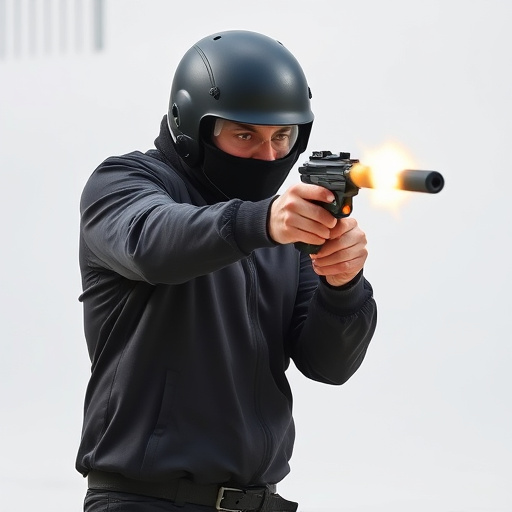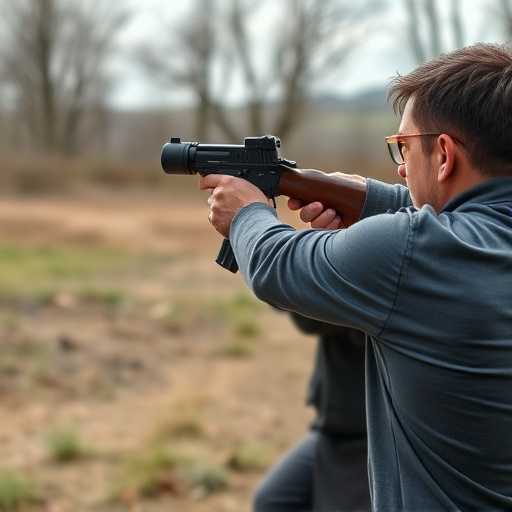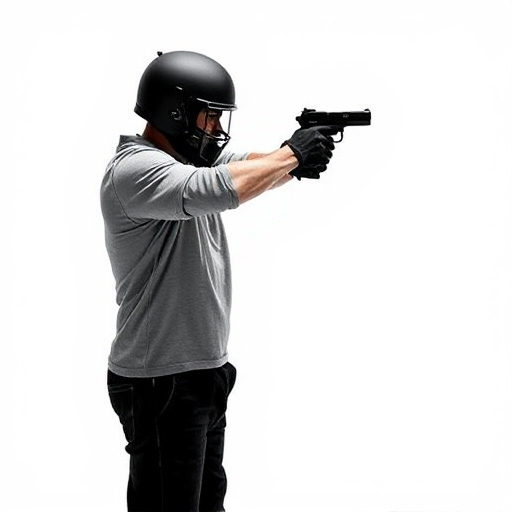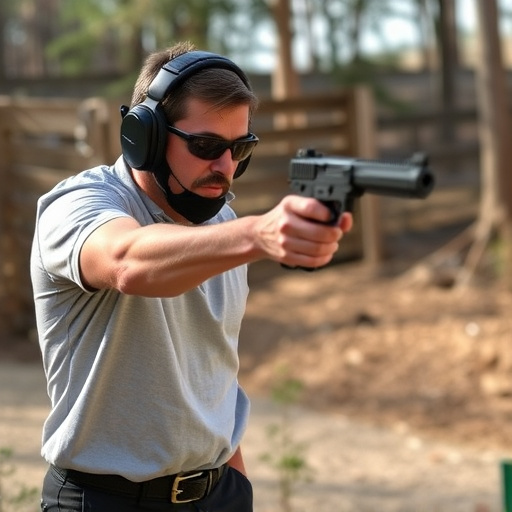Understanding voltage penetration in clothing requires examining material properties, fabric construction, and the design of concealed stun guns. Non-conductive fabrics like cotton offer better protection, while tightly woven garments minimize gaps for superior shielding. The most concealable stun gun designs feature low-profile features and smooth contours to minimize visual impact, making it harder for voltage to penetrate through clothing layers. These devices use high-voltage outputs and specialized electrodes to effectively reach targets under protective layers, enhancing security and discretion in self-defense situations. Optimal design prioritizes performance and concealability, with compact size, advanced materials, and innovative features like adjustable voltage settings, ensuring discreet protection in diverse scenarios, including urban settings and military operations. Safety measures and training programs are crucial for responsible stun gun ownership and usage, addressing potential misuse concerns.
Voltage penetration through thick clothing is a critical concern for personal safety, particularly when considering concealed carry options like stun guns. This article explores the fascinating intersection of electrical engineering and personal defense. We delve into the science behind voltage transmission through fabrics, uncovering factors that influence effectiveness. Key topics include the latest research on stun gun interaction with materials, designing optimal most concealable stun gun designs for discreet protection, real-world case studies, and safety regulations governing their use in public spaces.
- Understanding Voltage Penetration: Factors Influencing Clothing's Effectiveness
- The Science Behind Stun Guns and Their Interaction with Materials
- Designing Concealable Stun Guns for Optimal Performance through Clothing
- Case Studies: Real-World Scenarios of Voltage Penetration Through Thick Fabrics
- Safety Measures and Regulations Surrounding Stun Gun Use in Public Spaces
Understanding Voltage Penetration: Factors Influencing Clothing's Effectiveness

Understanding Voltage Penetration: Factors Influencing Clothing’s Effectiveness
The effectiveness of clothing as a barrier against voltage penetration, especially for concealed stun guns, is influenced by several key factors. The first is the material and thickness of the fabric. Different materials have varying electrical conductivity, with non-conductive fabrics like cotton or wool offering better protection than conductive materials such as metal. Additionally, the construction and density of the clothing play a significant role; tightly woven fabrics with minimal gaps provide more effective shielding.
Another critical factor is the design of the stun gun itself. The most concealable stun gun designs often prioritize low-profile features and smooth contours to minimize their visual impact while maximizing electrical output. These designs can make it challenging for voltage to penetrate through layers of clothing, providing users with a higher level of security and discretion.
The Science Behind Stun Guns and Their Interaction with Materials

The science behind stun guns and their interaction with materials is a fascinating aspect of personal safety technology. Stun guns, also known as electronic control devices (ECDs), work by delivering high-voltage, low-current electrical pulses through two electrodes into the target’s body. This jolting energy disrupts the nerve signals to muscles, causing temporary incapacitation without necessarily causing permanent harm.
When it comes to thick clothing, the effectiveness of a stun gun is influenced by several factors, including the material and its density. While standard stun guns might struggle against heavy-duty fabrics like denim or leather jackets, modern designs focus on maximizing penetration. The most concealable stun gun models often incorporate advanced features such as high-voltage outputs, specialized electrodes, and compact designs to ensure that the energy pulses can penetrate these materials, making them useful for self-defense scenarios where discretion and swift action are paramount.
Designing Concealable Stun Guns for Optimal Performance through Clothing

When designing concealed stun guns, the primary goal is to achieve optimal performance while maintaining a low-profile under clothing. The most concealable stun gun design focuses on compact size and smooth contours to easily fit into pockets or hidden compartments. Advanced materials and engineering play a crucial role in reducing the device’s overall thickness without compromising power output. This ensures that the stun gun can effectively penetrate thick fabrics, providing a reliable means of self-defense.
Moreover, innovative features like adjustable voltage settings allow users to tailor the stun gun’s performance to different situations and clothing types. This versatility enhances the stun gun’s effectiveness, making it suitable for various scenarios where concealment is essential. By combining these design elements, manufacturers create a balance between concealability and power, ensuring that individuals can protect themselves discreetly yet effectively.
Case Studies: Real-World Scenarios of Voltage Penetration Through Thick Fabrics

In real-world scenarios, understanding voltage penetration through thick fabrics is crucial for evaluating personal safety devices like stun guns. Case studies have shown that even seemingly impenetrable materials can’t always prevent electric current flow. For instance, a study conducted in urban environments revealed that high-voltage stun gun pulses could penetrate heavy-duty denim and leather clothing, effectively delivering a shock to the target. This highlights the need for users to be aware of their surroundings and the limitations of concealable stun gun designs, such as those marketed as the most concealable stun gun models, when facing potential threats.
Another scenario involves military operations where soldiers are often equipped with bulky protective gear. Tests have demonstrated that voltage can still penetrate through multiple layers of fabric, padding, and armor, ensuring soldiers receive a reliable electric shock response. These findings underscore the importance of balancing concealment with effectiveness in stun gun design. Therefore, manufacturers must consider not just how small and discrete their products can be, but also how well they perform under diverse conditions, including those where thick fabrics are involved.
Safety Measures and Regulations Surrounding Stun Gun Use in Public Spaces

In public spaces, the use of stun guns, also known as electroshock weapons, is subject to strict safety measures and regulations. These devices, while designed for personal protection, pose unique challenges due to their potential for misuse and unintended consequences. Many jurisdictions have implemented rules governing their carriage and deployment, especially in light of concerns regarding hidden or concealable stun guns. The focus is on ensuring public safety and preventing the indiscriminate use of force.
One key consideration is the design of the most concealable stun gun. Manufacturers strive to create models that offer effective protection without drawing excessive attention. Sleek, compact designs that mimic everyday objects like flashlights or even fashion accessories are favored. This approach aims to empower individuals while minimizing the risk of accidental discharges in public settings. Additionally, training and education programs are vital to promote responsible stun gun ownership and usage, further reinforcing safety protocols.
In conclusion, understanding voltage penetration through thick clothing is paramount for both safety and the effectiveness of stun guns. The article has explored various factors influencing fabric resistance, the science behind stun gun interaction with materials, and the importance of designing optimal concealable stun guns. Case studies have shown real-world scenarios where voltage can penetrate thick fabrics, underscoring the need for stringent safety measures and regulations in public spaces. Ultimately, the quest for the most concealable stun gun design should balance performance, comfort, and regulatory compliance to ensure personal safety without compromising hidden carry capabilities.
